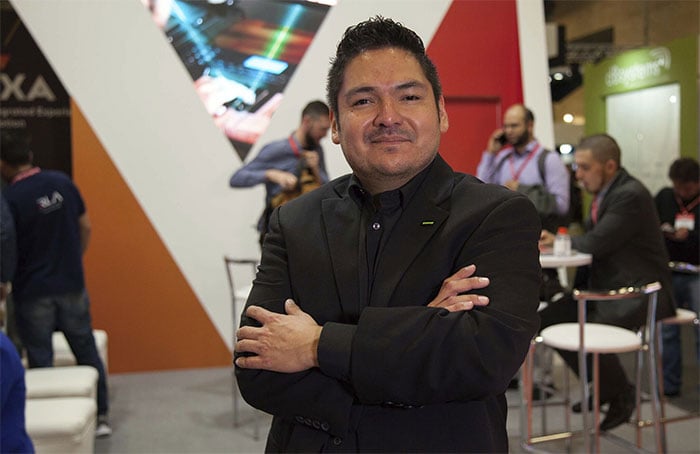Can you Imagine a Videoconference Without Audio?
Miguel Paucar is an experienced audio engineer who works as a Market Development Specialist for Shure with expertise in AV integration. Graduating as an Audio Engineer and Music Producer from Berklee College of Music, Miguel has a stable career in the audio industry, and has worked for companies such as Bose, MOTU, and IK Multimedia, among others. We caught up Miguel during InfoComm Colombia 2019, sharing with us his thoughts on the importance of having the right microphone for a videoconference system.
 Miguel Paucar, Maket Development Specialist, Shure
Miguel Paucar, Maket Development Specialist, Shure
Miguel explains that both audio equipment manufacturers and AV integrators face different challenges when it comes to presenting a videoconference solution to their customers. A common one is the uneven budget ratio of video-to-audio that clients often plan on, as many of them are very visual and understand better through sight, so cameras, lighting, projectors, and displays get a more significant slice of the budget.
“We should not forget that, during a videoconference, the most important thing is that communication is not interrupted. If video fails, the meeting can go on relying only on sound, but if the audio doesn’t work, it’s practically impossible to continue”, said Miguel. Thus, the importance of having a system tailored for the user’s needs, from the acoustic design of the room, the materials, sound reinforcement equipment, and the right microphone guarantees proper voice capture and word intelligibility.”
Miguel is responsible for the South American, Central American, and Caribbean regions, giving him a clear idea of the most common problems involved in videoconference projects. “When audio is not considered, people usually get cheap, sketchy microphones,” said Miguel. “The usual complaint customers have is that their counterparts can’t hear them very well; they mention too much ambient noise or much reverb. In those cases, you could suggest a better acoustic treatment for the room, but experience has shown us that many times it’s a bad microphone performance,”
To avoid a double expense for the client to get the adequate audio quality, Miguel suggests that manufacturers and integrators should spend time guiding and educating them on the importance that each element has in a videoconference system. To get there, AV professionals should train themselves, study, and know the multiple product options out there. “At Shure, we have an online education platform, the Shure Audio Institute, and it is available for customers, integrators, commercial teams, and installation technicians. We also train and certify professionals across many Latin American countries,” he explains. “For example, even though it is easy to operate, our new Microflex Advanced microphone line requires specific technical knowledge for its proper installation, so we provide it, we want many integrators to have the skills.”
Miguel points out that his relationship with AVIXA™ has helped him in that sense, with events such as InfoComm Colombia, where he can get in touch with other industry professionals and present his initiatives. “We have access to tools like CTS certification; one of my goals is getting mine very soon,” he said.
When the work of training, educating the user, and selecting products are done the right way, results are always good. Miguel shares that one of the satisfied customers of Shure is none other than the Chilean Office of the European Union. They use their microphone line for local meetings and for videoconference sessions as they reach out to other offices throughout the EU. “In a videoconference, we express ideas, opinions, and feelings; therefore, words must reach the other end with the best definition,” he said, and without a doubt, these people understand the value of words.
According to Miguel, the markets that have a higher demand for this type of solution are Corporate, Government, and Higher Education, there’s an essential growth in online education. “My job is helping the client or integrator to find the best audio product for the application and providing technical support, that is, Shure’s approach, to develop and offer solutions for specific needs. The company has been in the market for over 90 years, so there is quite a lot of experience that we can put at service,” he explains.
On the approach that his AV industry colleagues should have, Miguel says that “solutions should be simple to the end-user, yes, but also to the integrator. They should be stable and reliable, complying with standards that make collaboration possible so the next call they get from a client is about a new project, not a complaint from a past one, there is more at stake than their money, it is the trust in our work.”
For more information on CTS certification, visit avixa.org/certification.





.png?sfvrsn=519c2f3c_1)